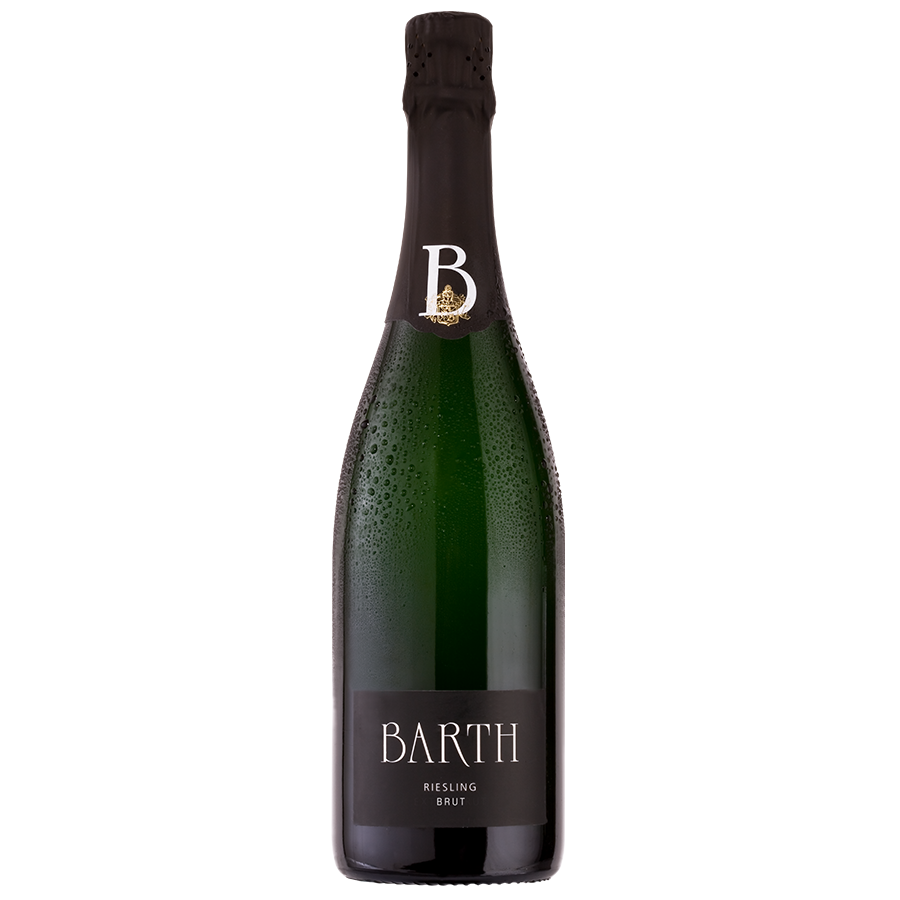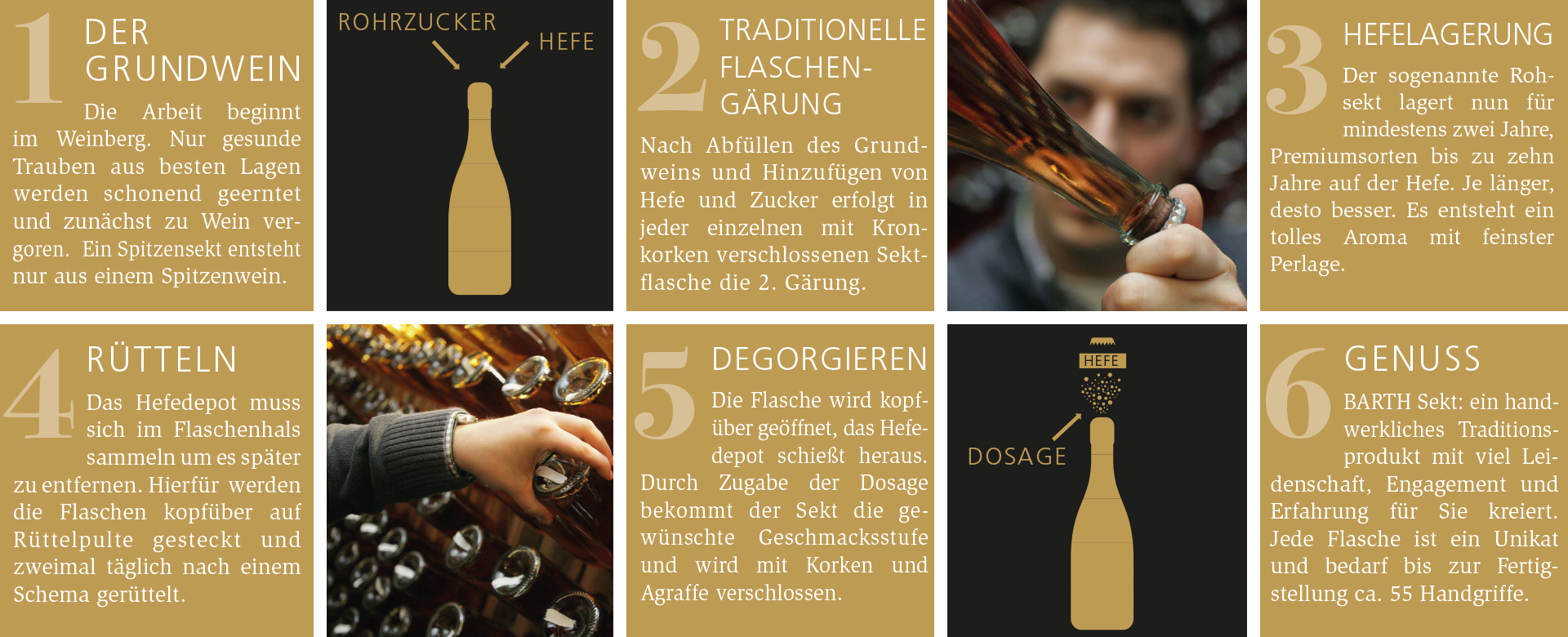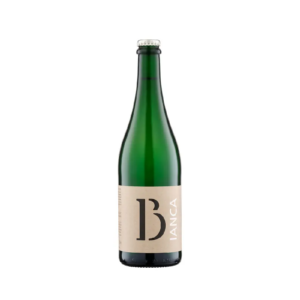Beschrijving
BARTH SPARKLING WINE-TRULY HANDCRAFTED
BARTH sparkling wine is made in accordance with the most time-consuming and sophisticated method of sparkling wine making: traditional bottle fermentation method. A handcrafted traditional product, created for you with passion, dedication and know-how. Below you will find all information regarding the individual steps manufacturing BARTH sparkling wine.
1. Base Wine for Sparkling Wine
For our sparkling wine, only the best is good enough – therefore the work starts in the vineyards. Only fully ripened, healthy grapes from our top vineyard sites are carefully harvested. The grapes’ acidity is of importance, as in the final product, acidity acts as a flavour enhancer. The grapes are processed by gently whole-grape pressing and, under the expert supervision of our experienced winemaker, fermented to wine. This is the base wine, from which, by means of a second fermentation, our sparkling wine is made. When making a sparkling wine, the quality of the base wine is decisive factor for the outcome of the sparkling wine. A premium sparkling wine can only be made from premium base wine. The base wine is bottled in sparkling wine bottles.
2. Second Fermentation
When sparkling wine is made according to the traditional method, the second fermentation occurs in the sparkling wine bottle. In order to achieve a second fermentation, cane sugar and some yeast is added to the base wine in the bottle. After closing the bottle, the second fermentation begins which can last up to two months. As a result of this fermentation, among other things, carbon dioxide is produced which cannot escape from the bottle. After the second fermentation is completed, the sparkling wine has about 1,2% more alcohol than the base wine and the bottle is under 4-6 bar pressure.
3. Maturation on the Yeast
After completion of second fermentation, the raw sparkling wine, closed with a crown cork, is stored in our cellar at a constant 13 degree Celsius for a minimum of nine months, some of our premium varieties up to three years. After the second fermentation, the sparkling wine improves by extended maturation on the yeast which renders the sparkling wine a fine aroma and an extremely fine perlage. The longer the sparkling wine is allowed to mature, the better the end product!
4. Riddling
The yeast in the bottle forms a yeast depot which has to be removed before the sparkling wine is sold. The bottles are stacked in riddling grids and twice a day riddled (rotated in a certain angle and slowly moved from a horizontal to an upright position). This moves the yeast depot into the bottle neck. For all our BARTH sparkling wine, this riddling process is done entirely by hand.
5. Disgorging
The last production step is the so-called disgorging – a process whereby the yeast is removed from the bottle. The sparkling wine bottles are positioned into the disgorging machine, bottle neck down. The machine removes the crown cork and due to the pressure in the bottle the yeast depot shoots out. By adding the tirage, that means filling the missing liquid into the bottle, our sparkling wine obtains the desired level of sweetness: extra brut, brut or dry. Then the bottle is corked and the agraffe, the wire around the cork is affixed to the closure for additional security. The bottle is now under 4-6 bar pressure. To ensure the freshest product for our customers, we disgorge limited batches of bottles every 8 weeks.
6. Enjoyment
As a result of the bottle fermentation method, the sparkling wine has a very fine perlage. The small bubbles transport the flavours to the surface and release an intense bouquet. They also result in a bubbly sensation in the mouth which further releases a multitude of flavours over the taste buds. The finer the bubbles in a sparkling wine, the finer the taste. Each bottle is individual as the yeast, a living product, reacts slightly different in each bottle. By the way, each bottle of BARTH sparkling wine, from bottling of base wine to labelling of bottle, is handled by our team of experts up to 55 times!







